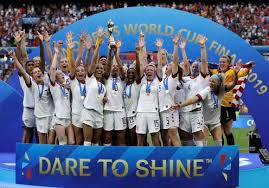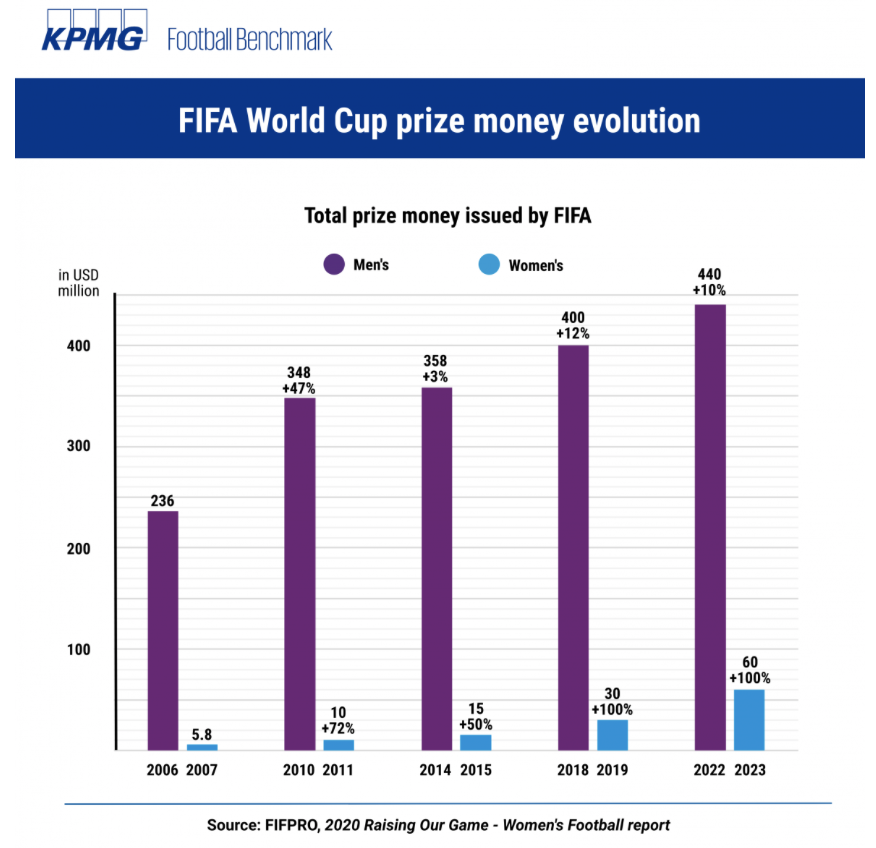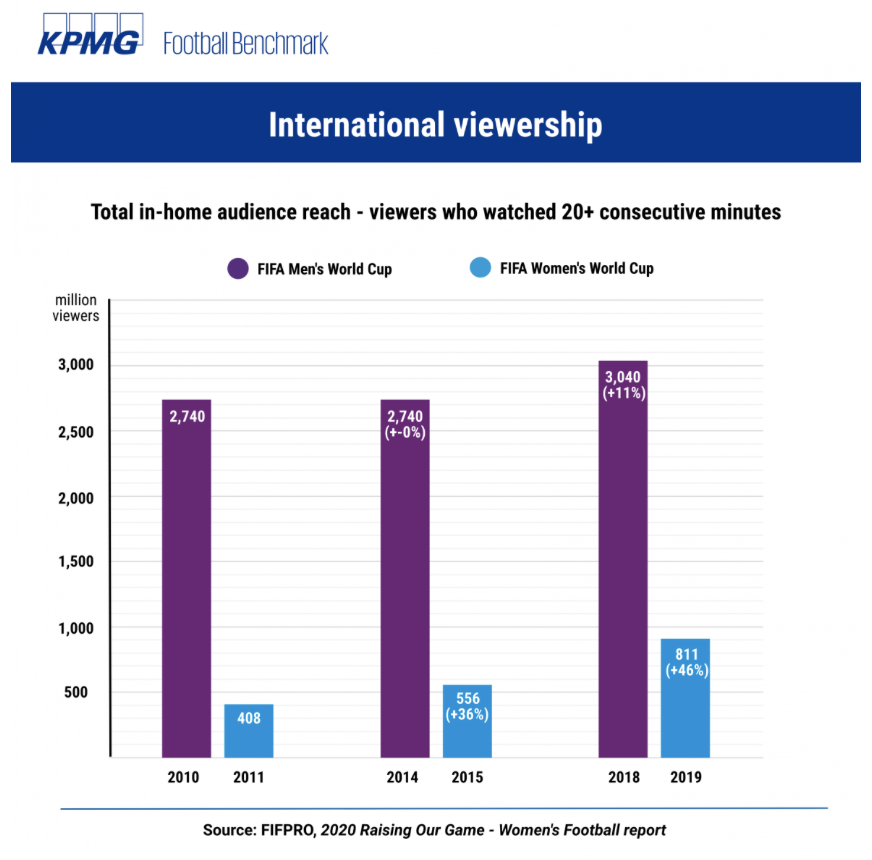June 12 – After a short period of boom, the women’s game is in danger of going bust as the coronavirus pandemic hits at perhaps the most vulnerable section of world football’s society, indicates a report by the KPMG Football Benchmark team.
“The women’s football eco-system is still fragile: the industry is characterized by less established professional leagues, low salaries, a narrower scope of opportunities, uneven sponsorship deals and feeble corporate investment,” says the report, arising from a piece of work KPMG did with FIFPRO for its 2020 Raising Our Game report.
“The vulnerability of the women’s football industry is even more palpable in the current coronavirus pandemic, which presents an almost existential threat to the women’s game,” is the report warning.
The KPMG Football Benchmark analysis of the women’s charts the significant upward trends pre-pandemic a player and stakeholder surveys, primary interviews with executives and experts, and secondary research focusing on women’s football.
Despite the speed of player number growth and recognition, the women’s game has not fully established itself in terms of staffing and facilities, found the researchers. “More than half of the players interviewed complained about not having enough backroom staff (physiotherapists, team doctors, massage therapists and assistant coaches) to support them, and about a lack of proper sporting infrastructure (training facilities and equipment), demonstrating that the overall conditions that female players are competing under were far from the standards one might expect,” said the report.
In its report on the women’s game FIFPRO focusses on setting global labour standards and protecting players’ rights and wellbeing, saying that safeguarding the women’s game, is more relevant now than ever, and that the women’s game needs special measures that account for the unique conditions of female players, clubs and competitions.
FIFPRO calls for improved global minimum standard employment conditions and competition organisation, as well as collective bargaining and “new global club and national-team competition formats and scheduling that permit professional players to enjoy a long and sustainable career.”
KPMG focusses on the metrics pointing out that “despite doubling the prize money of WWC 2019 compared to that of the previous one (2015), that amount is dwarfed by the USD 400 million prize money distributed at the men’s World Cup in Russia in 2018. As our chart shows, in spite of a further doubling of the prize money in the women’s top tournament in 2023, the gap remains huge.”
The women’s game has brought new sponsors to football but a lower price point (generally less than €1 million in the international game), but attendances and TV audiences have been growing.
The report says that it will be the international game that will be the key driver of the women’s game because of their ability to reach much larger audiences than club football.
“The premier international tournaments, such as the FIFA Women’s World Cup and Olympic Games, provide the boost that drives visibility, increases popularity, and gives prestige to the sport,” says KPMG.
The authors find “that overall attendance in women’s club football has been relatively stagnant in recent seasons, including the flagship UEFA Women’s Champions League competition. While attendance at the tournament’s finals had increased for some time, the 2018 event in Kiev, Ukraine attracted only 14,000 fans, just days before the men’s final was played in the same city in front of over 60,000. Furthermore, average attendance in most countries’ top domestic leagues is still under 1,000 spectators per match.”
FIFPRO’s general secretary, Jonas Baer-Hoffmann, said that “the solidarity, courage to change and collectivism between players, clubs, leagues and federations will be essential to find fair and sustainable measures for the future of the football industry.”
Contact the writer of this story at moc.l1714168172labto1714168172ofdlr1714168172owedi1714168172sni@n1714168172osloh1714168172cin.l1714168172uap1714168172



